Often, the leaves of our favorite plants turn yellow or brown. No matter how much care and attention we give them. Anthurium is also a victim of this natural phenomenon. Anthurium is a gorgeous flower plant! Seeing it getting weak can be heartbreaking.
In this article, I will introduce to you the main reasons that caused your anthurium leaves to turn yellow.
Related article: Why Are Jasmine Leaves Turning Yellow and How to Treat It
Table of Content
- Natural Causes
- Over Watering
- Root Rot
- Humidity
- Soil Quality
- Temperature
- Fertilizer
- Improper Sunlight
- Fungal Diseases
1. Aging Can be an Underrated Cause of Anthurium Yellow Leaves
In nature, once plants grow a bit older, they start to show some symptoms on the leaves such as dropping, yellowing, browning, drying, and wilting. Now, these symptoms should not be a cause for concern as they are a part of the plant life cycle.
If you leave your plant alone, these leaves will eventually fall and your plant will keep growing bright and shine. However, you always have the option to remove them yourself if you like your plant to always look pretty and healthy.
Now, you need to be able to distinguish between this harmless natural cause and other problematic causes.
2. Over Watering Will Lead The Anthurium Leaves to Turn Yellow
Too much water can kill any plant! That is why it is important to be careful about the amount of water we use on our precious plants.
You can tell that you’re overwatering your anthurium plant by noticing water accumulating around it. This is the most common reason why anthurium leaves turn yellow. Anthurium is a fragile plant, it is not resistant to too much water.
Each season requires a different schedule of watering. And this applied to almost all plants, not especially the anthurium flower plant.
Generally speaking, it is enough to water once a week in the spring and autumn, and during summer, it depends on the region you live in and the different levels of temperature. Either way, you need to check your soil dryness. When the top inch of the soil is dry, water it. If is it still a bit moist, do not water it.
If you live in a dry and hot area, you will need to check your soil more often than a person who lives in a humid warm area.
In winter, your anthurium plant needs to be watered only once a month. That is to just keep it alive and prevent it from having frostbite.
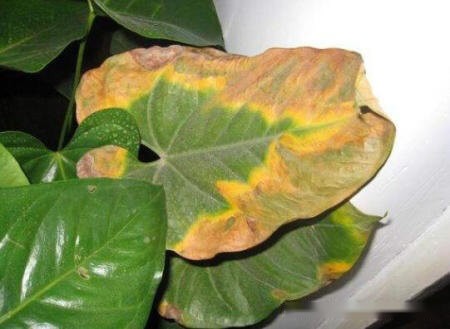
3. Root Rot Can be Very Dangerous
Root rot comes as a result of overwatering. This is probably the worse cause of yellow leaves. Other causes can be handled and treated in simple and modern ways, while root rot can be quite hard to deal with. In severe cases, it might be deadly.
However, that does not mean you should give up on your anthurium bestie. We never give up on our plants! they are a part of our family.
Normally, the way to identify root rot is by noticing the yellow spot on the leaves starting to turn brown. To save your dying anthurium plant from root rot follow these steps:
- Remove the plant carefully from the soil.
- Cut off the rotten roots.
- Replace the old soil with a new fresh one.
- Place your plant back in the new soil.
- Do not water it for 2-3 days (if you live in a very dry hot area, I recommend you to water it a day after)
These simple steps can bring your precious plant back to life. Bare in mind that preventing problems is better and easier than treating them. So, next time you’re watering your plant, make sure to give it just the right amount it needs.
For more details on root rot, you can read this article: What Is Root Rot, Causes, Treatments, & How to Prevent It
4. Humidity Plays an Important Role in a Healthy Anthurium Plant
Anthurium flower loves humidity. Usually, people who face this issue live in dry climates. When the anthurium is exposed to dry weather lacking humidity for a long time, it will cause the edges of the anthurium leaves to turn yellow and a bit crispy.
This also happens during winter when the air is dry and cold. Therefore, to recover from this issue, make sure to spray the leaves with water frequently, or you can wipe the leaves with a damp towel.
5. Soil Quality Affects the Growth Process of the Anthurium
The soil quality is as important as any other factor. It is necessary to choose a quality that will provide aeration and allows the water to drain. If the soil is too muddy, the plant will have trouble absorbing the nutrients, breathing, and draining the excess water.
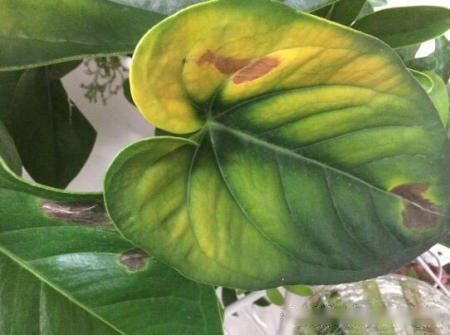
You can try to use this soil mixture if you doubt your soil is of poor quality. Just take an equal amount of peat moss and vermiculite or perlite and your plant will thank you for it.
Related article: Reasons Why Money Tree Plant Leaves Are Pale -Treatment
6. Temperature Can Lead to Yellow Leaves on Anthurium Plant
Even though anthurium is a tropical plant, it is a very cold-resistant plant. However, the most suitable temperature for its best growth is around 70 to 86° Fahrenheit (20 to 30 °Celsius).
Once the temperature is lower than 60° Fahrenheit (15 °Celcius), it will stop growing. If it drops lower than 50°F (10 °C), frostbite will occur, and the leaves will turn yellow and eventually become black.
Therefore, when the temperature drops intensely, be sure to move the anthurium to a warm place indoors. I must note that once you move your plant indoors, make sure to keep it away from the heater and air conditioner as they might cause even bigger problems.
Read more: How to Make Nitrogen Fertilizer at Home
7. Fertilizer And Anthurium Yellow Leaves

When you fertilize excessively, the plant will struggle to absorb the nutrients. This will lead the roots of the plant to be burnt and the leaves to turn yellow and black.
Unfortunately in this case, once these leaves change in color, they can not go back to looking green and healthy. However, if you fix the problem right on time, the newborn leaves will grow as green as before.
Whenever you apply too much fertilizer, try to dilute it with water. And in severe cases, change the potting soil immediately.
Related article: Why Are Jasmine Leaves Turning Brown & How to Treat It
8. Improper Sunlight Can Be the Main Cause of Anthurium Leaves Turning Yellow
Anthurium plant likes balance. It needs to be put in a place where it can get direct sun exposure for a few hours and a shaded place for the remaining daylight.
If you expose your dear plant to direct sunlight for too long, especially if you live in hot areas, the leaves not only would turn yellow, but they will also experience sunburn and turn completely black.
Placing it in a shaded place all day will also cause the leaves to turn yellow. That is why it is important to create a balanced light environment.
I would personally recommend placing your anthurium plant in a place where it can get the before noon sunlight exposure.
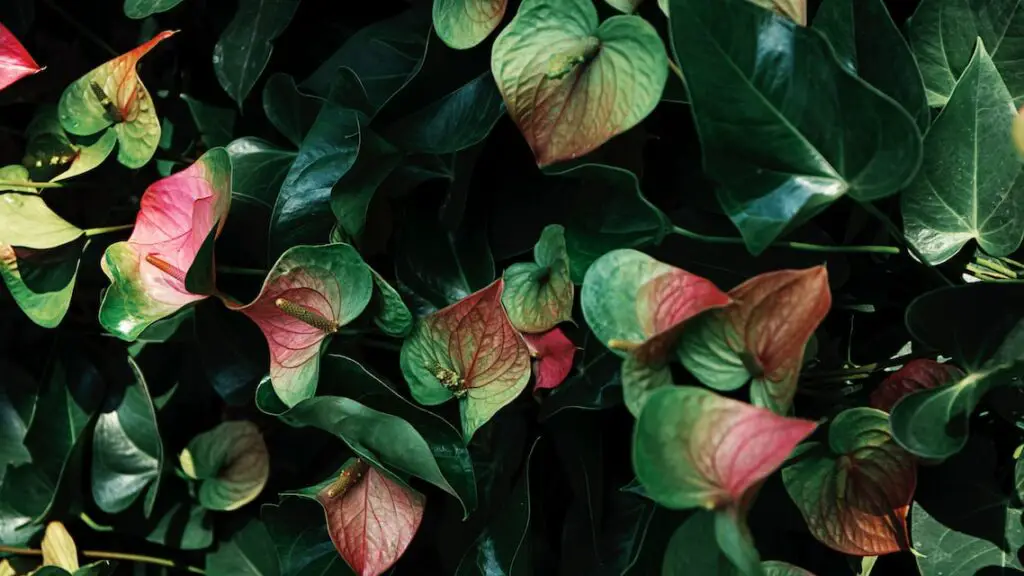
9. Fungal Diseases Affect the Color of Anthurium Leaves
Lastly, all plants are exposed to fungal diseases. This type of disease causes foliage discoloration. That is to say, when the plant is infected by a fungal disease, the leaves might turn yellow, brown, or even red, depending on the type of bacteria.
The best solution is to use an appropriate fungicide as the instructions on the label say. For better and faster results, cut off all the infected areas and the discolored leaves to make sure that the fungus will not revive and the fungicide will work better.
I hope this information was helpful! If you want to know more about plants, please join our newsletter and follow our social platforms

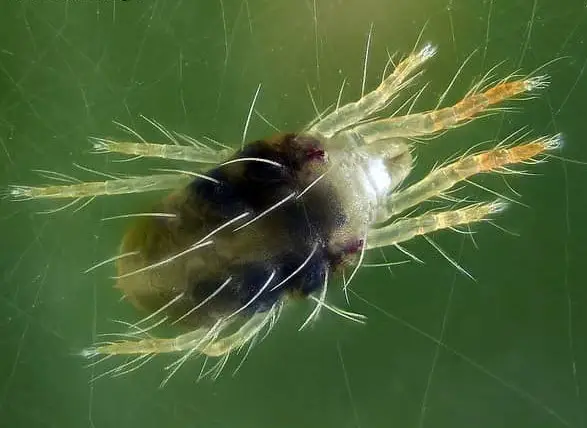
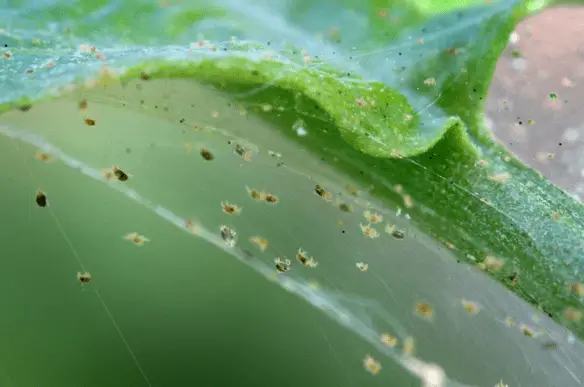
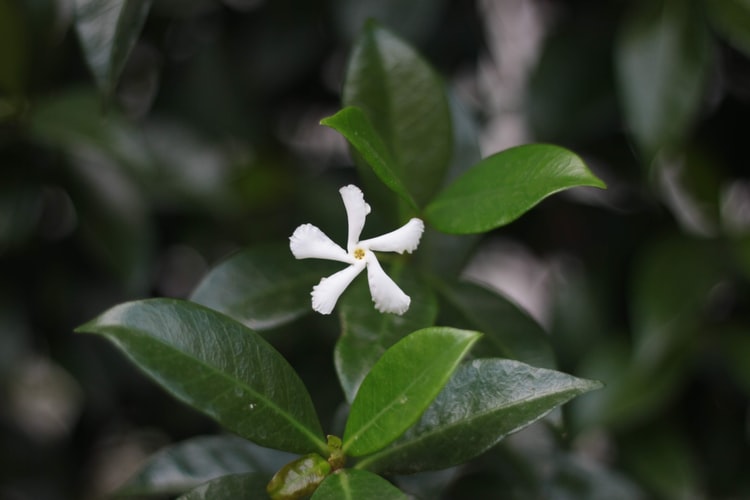
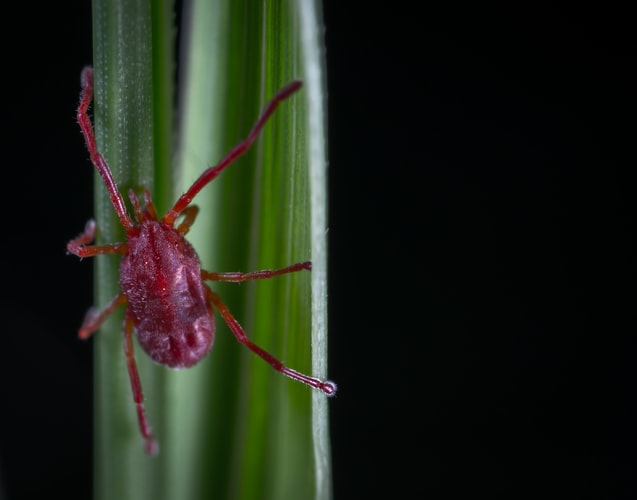
My brother recommended I would possibly like this website. He was once totally right. This post actually made my day. You cann’t believe just how a lot time I had spent for this information! Thanks!